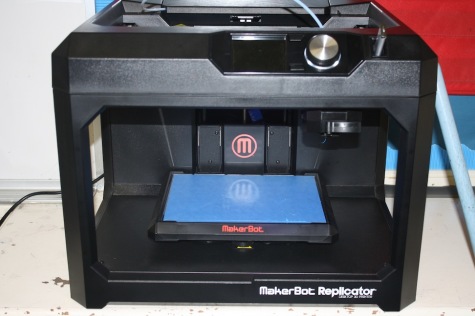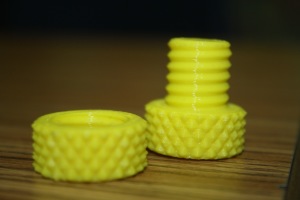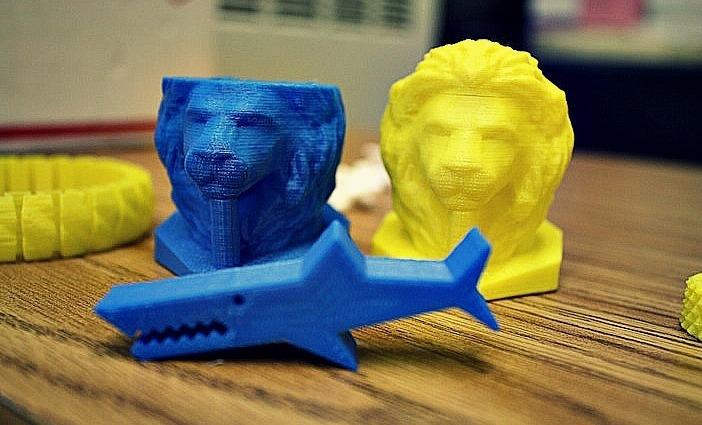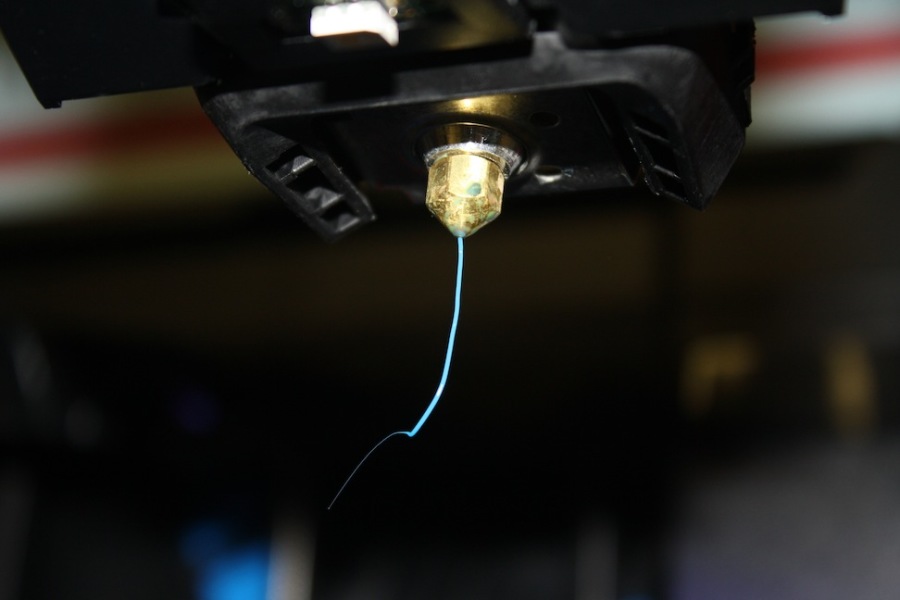Printer of the FUTURE: Lincoln’s MakerBot Replicator in Action
February 5, 2015
Did you know that three-dimensional (3D) printing has produced a titanium jawbone for an 83 year-old woman, a functional car, and even edible pizza that can be consumed by astronauts in space?
Chuck Hull patented his idea in the early 1980s as “a system for generating three-dimensional objects by creating a cross-sectional pattern of the object to be formed;” it has since spring-boarded into a futuristic phenomenon that exists in pockets of the developed world. The do-it-yourself tech studios and well funded school programs that characterize an upscale section of Silicon Valley are one of those pockets, where technologies like 3D printing have soared.
Your School, Your Tool: Meet Lincoln’s New 3D Printer

Lincoln High School, which does not lie in a particularly wealthy school district and typically goes without such resources, has recently obtained a 3D printer of its own. This entry-level printer, which can produce objects of a maximum size of 10″ by 8″ by 6″, is called the MakerBot Replicator Desktop 3D-Printer and is situated in Room 1 of the main building, Mrs. Reid‘s domain.
There is an academic reason for the addition of the printer. Mrs. Reid, who teaches Geometry and A.P. Computer Science, told Lion Tales, “We are trying to incorporate it into our architectural, ‘future high school’ design, where students can design some, they have to do scale models of maybe furniture or the classroom. Something like Sketch-Up or TinkerCAD. It’s a software where you design and then you have to transfer that file into a MakerBot file, which this is able to read.”
For the 3D printer to register those files, Reid added, one “can use a USB. This [3D printer] already has some examples, like a coffee table and Mr. Jaws.”
Where did the money to purchase the MakerBot come from? Said Reid, “This was like $3600. I applied for a grant, the Silicon Valley Education Foundation… –Mr. Alpers and I worked together– and we got a $1500 grant. Plus I got two very generous donations.”
She continued, “It’s very user-friendly. 3D printers have been around since 1986. And before, they used to be very, very expensive. These are now more affordable to the hobbyist or hacker or maker-person.”
Observing the Printer Perform its Magic
Lion Tales paid Room 1 a visit on Feb. 3 to obtain a close-up view of the new technology. For demonstration purposes, Mrs. Reid prepped the machine with a simple example plan that would produce a five-link chain, and Lion Tales picked the color– blue. The printing process can be viewed in a time-lapse video on this page.
It took a few minutes for the printer to warm up, just as it would for an average paper printer or copier. With its temperature rising to 387 degrees Fahrenheit, the MakerBot Replicator is an appliance that requires some monitoring. Just as one does with an oven, Mrs. Reid always tries to be in the room or around the general vicinity while the printer is working on a project, to make sure nothing goes wrong.
Feeding the whole production was a reel of blue PLA (polylactic acid) plastic, which acted as the raw material. During the print, the PLA was liquified and released in wispy filaments from a metal “extruder” point. These filaments were laid down on the printer’s platform piece by piece, one layer after the other.
Twenty-five minutes after initializing, our blue printed chain rolled off of the press complete with a flat base layer, making the print easier to detach from the machine. The base layer was simple to remove once the item was in hand- it was just pulled off and no permanent damage done. Extraordinarily, each link of the chain moved freely from the others, as if they had been linked together after the fact; not built from the ground up as a series of solid layers.
While the five-link chain constructed for Lion Tales on Feb. 3 only took twenty-two minutes (not counting warm-up and cool-down) to complete, other projects are more time consuming. A lion’s head figurine took about two and a half hours to make, and certain other items would require a much longer time frame, closer to twenty-four hours.
A 3D Future: Everything You Need, You Make Yourself
One might ask: what is on the inside of these plastic items? Not every project is filled solidly. Some have a webbed pattern in the interior which provides support and keeps what would be a hollow object from caving in. The goal? Durability and practicality. “You can make a lot of practical pieces, like for modeling or a toy,” Reid said.

One piece she had on hand was a mechanism made out of what resembled two bolts and a screw, all printed, of course. The brightly colored print was not all that different in terms of strength and functionality from what one might find in a toolbox. What this means is monumental. Thirty years from now, a need for bolts may not mean a trip to the store. If 3D printers were to become a household fixture, practical items such as these could be whipped up in the comfort of one’s own home.
Welcome to the future.
Related:

